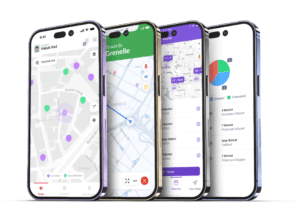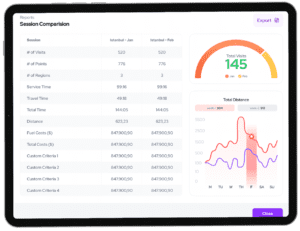How Geographic Information Systems (GIS) are Transforming Healthcare Supply Chains and Operations
In today’s fast-paced healthcare environment, Geographic Information Systems (GIS) have emerged as a critical tool for optimizing operations and improving service delivery. At Geovision Group, we believe in leveraging the latest technological innovations to enhance healthcare processes, and GIS plays a key role in that. Let’s explore how GIS is revolutionizing the healthcare sector, from supply chain management to emergency resource allocation.
Optimizing Healthcare Supply Chains with GIS
Effective supply chain management is vital in healthcare; the timely delivery of medical supplies can directly affect patient outcomes. By utilizing GIS, it becomes possible to analyze geographical data to find the fastest and most efficient delivery routes. This ensures that medical supplies reach hospitals and pharmacies swiftly while also improving field sales efficiency and reducing operational costs.
At Geovision Group, we have seen firsthand how GIS data enables better decision-making. By providing visibility into real-time supply chain operations, we optimize inventory management, reducing stock shortages and surpluses.
Improving Sales Territories with GIS Insights
Creating balanced and efficient sales territories is crucial to boosting sales team productivity. By combining GIS and CRM data, healthcare organizations can create balanced sales territories based on regional demand patterns. This ensures that resources are focused where they are most needed, ultimately leading to better service delivery for both patients and healthcare providers.
GIS also enhances inventory management by ensuring that the right supplies are in the right place at the right time. At Geovision Group, we help healthcare organizations manage their distribution processes more efficiently, ensuring smoother operations and fewer disruptions.
Emergency Resource Management: Fast, Efficient, and Transparent
In emergencies, it is critical to allocate resources quickly and accurately. GIS-based systems allow healthcare organizations to rapidly distribute critical medical supplies to the areas that need them most. Real-time insights provided by geographical data help ensure the fast and effective delivery of emergency supplies.
Additionally, GIS adds transparency and security to the entire supply chain, allowing healthcare providers to trust that their supply chains will function smoothly even in times of crisis. Geovision Group is proud to offer solutions that make healthcare supply chains more resilient and adaptable.
Supporting Rural Healthcare with Simplified Processes
In rural areas, healthcare providers face limited resources and logistical barriers. GIS provides better visibility into supply chains, simplifying ordering processes for rural healthcare providers and helping them manage their inventory more efficiently. This ensures that rural healthcare facilities are well-stocked with the necessary medical supplies, minimizing the risk of overstocking or understocking.
At Geovision Group, we recognize the critical role rural healthcare providers play in the healthcare ecosystem, and we are committed to helping them work more efficiently with GIS-supported solutions.
Choosing Optimal Locations for New Facilities
Selecting the right location for a new hospital or clinic can be a complex decision involving many factors, from population trends to healthcare demands. With GIS, healthcare organizations can use AI-powered analytics to identify the best locations, considering variables like population growth, local healthcare trends, and economic factors.
At Geovision Group, we help healthcare organizations make informed decisions about where to build new medical facilities. By using GIS, we ensure that new hospitals and clinics are strategically positioned to serve their communities effectively.
Resource Optimization and Disease Surveillance
Efficient resource allocation is another area where GIS excels. By providing detailed geographical data, GIS allows healthcare providers to optimize resource use, improving service quality and profitability. Additionally, GIS helps assess the feasibility of new medical facilities and effectively manage patient volumes.
GIS is also a powerful tool for disease surveillance and forecasting. By analyzing historical data patterns and real-time data, healthcare providers can track the spread of diseases and predict potential outbreaks. This enables healthcare providers to respond more quickly and allocate resources more effectively.
Performance Management and Data-Driven Decisions
One of the greatest advantages of GIS in healthcare is its ability to track key performance indicators (KPIs). From delivery times to visit frequencies, GIS provides the data needed to identify service gaps and improve overall performance. Healthcare providers using GIS data can make data-driven decisions that enhance operational efficiency and improve patient outcomes.
At Geovision Group, we are committed to helping healthcare organizations unlock the full potential of GIS. By integrating GIS into their daily operations, we encourage healthcare providers to make smarter decisions and deliver better care to their patients.
Contents:
Supply Chain Optimization
- Faster delivery of medications
- Reduction of operational costs
Sales Territory Design
- Balanced and efficient sales territories
- Improved stock management
Emergency Resource Management
- Rapid distribution of critical medical supplies
- Transparent and secure supply chains
Rural Healthcare Support
- Simplified order processes for rural healthcare providers
- Effective stock management
Optimal Location Selection for New Facilities
- AI and GIS-based location selection
- Consideration of local healthcare trends and growth
Resource Optimization and Disease Monitoring
- Efficient resource allocation
- Monitoring and forecasting of disease outbreaks
Performance Metrics and Data-Driven Decisions
- KPI tracking
- Improvement of overall healthcare efficiency




